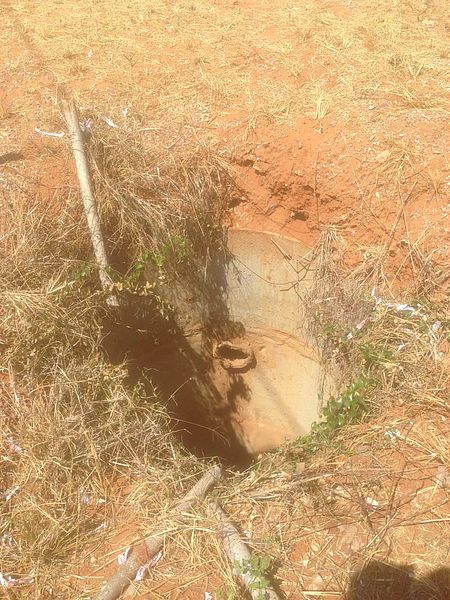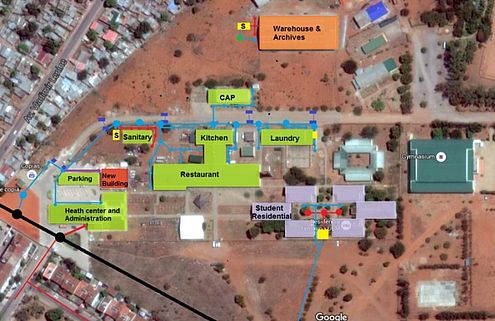Water reclamation at the Eduardo Mondlane University in Maputo
Designing a sustainable wastewater treatment system
During my research I investigated the possibility of water reclamation at the main campus of the Eduardo Mondlane University. My thesis was part of the overall project ‘Sustainable freshwater supply in urbanizing Maputo, Mozambique’. Only an estimated 26% of the total volume of faecal waste generated in Maputo is safely managed. The city has a problem with fresh water shortages. Therefore the objective of the thesis was to design a sustainable wastewater treatment system that could adjust the collected wastewater into irrigation water.
In order to predict the amount of produced wastewater that could be treated in the wastewater treatment plant, first I had to explore the existing network. This was one of the biggest challenges. The university itself had no information about their wastewater treatment apart from an old design from 2006. During field work I explored the campus with help of employees of the university. After all I concluded that the sewer system consisted of three different networks with three different destinations. One network was connected properly to the wastewater system of the city, but the wastewater of the other two networks was discharged into the sea.


Another challenge was to estimate the total amount of wastewater available for treatment.
First I wanted to do measurements, but most of the time there was no fresh water at the campus. Therefore, doing measurements seemed to be useless and I started using the statistics of students and employees. With these statistics I made predictions of the produced wastewaters in the university buildings.
After handling these two challenges, I started to design a treatment system. The proposed treatment system was a decentralized-wastewater systems consisting of anaerobic baffled reactors and horizontal subsurface constructed wetlands. The dimensions of the treatment equipment in the designs were optimized to meet the irrigation water standards for the effluent of the wastewater treatment plant. If all the wastewater is treated and afterwards used for irrigation water, an amount of 289 m3 of fresh water per day can be spared every day. At the end I compared irrigation needs of the irrigated with the total amount of treated wastewater. The total surfaces of the agriculture fields and the botanical garden could be irrigated with the treated wastewater.
Finishing my bachelor could not have been better than doing an interesting BSc thesis in such a beautiful city. It was a great experience to work on a project in another country with a different climate and culture. For us, fresh water is a certainty and we never realise how excellent our water supplies are. During my stay I made a lot of friends that only had fresh water in their houses for one hour in the morning. It gave me more motivation to make a good proposal, but I also learned to see things in another perspective. I want to thank the Marc van Eekeren fund for helping my on this fantastic adventure.